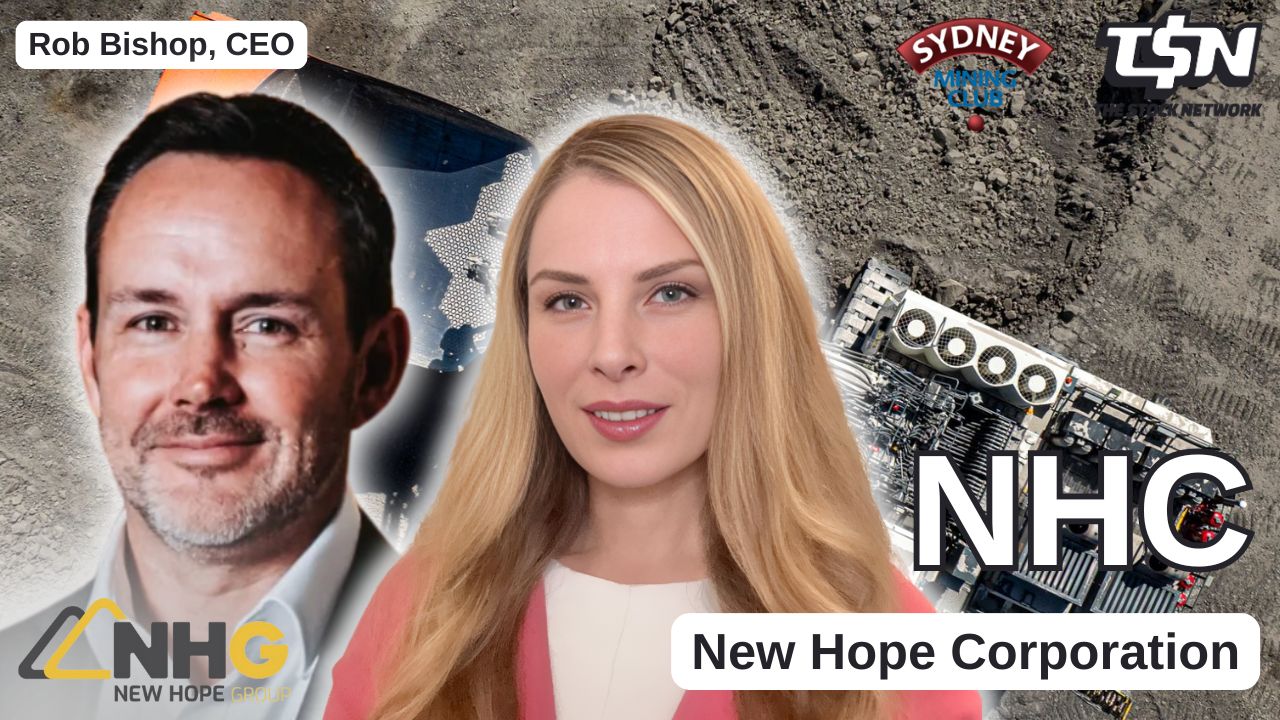Transcription of The Stock Network Interview with New Hope (ASX:NHC) Chief Executive Officer, Rob Bishop
Lel Smits: New Hope is a leading Australian energy company with its business centred on coal mining and exploration as well as associated port oil and gas and agricultural operations. The company’s flagship assets include the 80% owned Mangala Coal Mine in the Hunter Valley of New South Wales and the New Auckland Coal Mine in Queensland. Ahead of appearing at Sydney Mining Club, New Hope Chief Executive Officer Rob Bishop joins me on the Stock Network. Rob, welcome to TSN.
Rob Bishop: Thanks for having me.
Lel Smits: Now, New Hope Group was founded in 1952 and is going to become a leading energy business in Australia with a market capitalisation of more than $3 billion. Can you tell us about the company’s core operations and also growth plans?
Rob Bishop: Sure. So New Hope Group, as you said, has been around for quite a long time and seen significant growth in the last few years. I guess our cornerstone asset is the Mangala operation down in the Hunter Valley.
It’s going through a growth project and is seeking about 11Mt for the remainder of the life of the mine. And our other asset, Ackland Mine up in Queensland, the Darling Downs, it’s in ramp up and stage 3 and it’ll get to about 5Mt product. Both mines are a very low strip ratio, which underpins not only the low unit cost for both pits, but also low emissions, which essentially comes from those pits and the coal which comes out of both of those mines is a real premium high CV coal, predominantly exported to Asia. But we also provide domestic coal sales within New South Wales and a little bit within Queensland. More recently, we’ve made a strategic investment in the Malabar mine called Maxwell Mine, which is currently in ramp up.
And that’s going to be a tier 1 metallurgical coal mine in the Hunter Valley, just to the south of where Bengala is. I guess with all of those 3 assets, we’re looking to double our production and get to around sort of circuit 14Mt to 15Mt product tonnes of coal, primarily for export within the next few years. So all low unit cost coal, which is very much needed in this transition over the coming decades for the world.
To complement that, we have some pastoral businesses which surround our Ackland and Bengala mines and we also have our coal terminal at the Port of Brisbane to round it out.
Lel Smits: Excellent. Now, one of your major shareholders is renowned investment house Cellpats, which became a publicly listed business in Australia more than a century ago. How does New Hope create value for its investors by returning surplus capital to shareholders?
Rob Bishop: Yeah, it’s a good question. And the Souls Group, a great cornerstone shareholder of ours, very supportive of our business. And certainly a lot of shareholder return for that business, but also very much similar to New Hope over pretty much the history of the company.
I guess our focus at the moment from a capital management perspective is that growth project, which I mentioned previously, that’s really ramping up production to generate more shareholder value. The other focus at the moment, given, I guess, where the equity markets are at at the moment, and we see our business very undervalued for our assets. So we’ve turned on our share buyback, which will go a long way to providing our current shareholders more value.
And then probably the key thing for us is dividends. So we’ve got a very large franking account balance, which is a huge asset. And we want to get that to our shareholders.
So historically, we’ve always been good dividend payers. And a good example in the last, well, since FY22, we paid out more than 50% of our market capitalisation to shareholders in fully frank dividends, which is pretty exceptional. And with the growth plans, which I mentioned before, doubling our production of low unit cost product, that is set to continue well into the second half of next decade.
Lel Smits: Well, thank you so much for the update. All the best on the growth so far and look forward to hearing more at Sydney Mining Club very soon.
Rob Bishop: Thank you.
Ends
